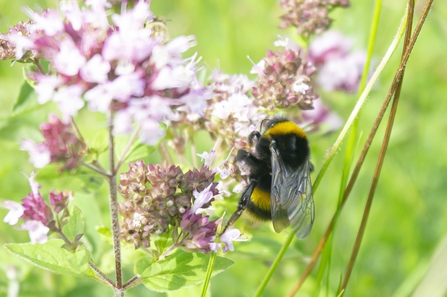Between 2020 and 2021, Jordan’s oat growers collectively farmed 15,000 hectares of countryside, of which over 4,200 hectares (28%) is managed for wildlife to support nature’s recovery, with the help of tailor-made farm wildlife plans devised by Wildlife Trust advisers.
These plans assist farmers in their efforts to improve and increase the wildlife habitats on their farms, such as ponds, hedgerows and wilder field edges, helping to give a boost to endangered species such as lapwing, grey partridge and yellowhammer. A host of other wildlife benefits too - from pollinators to brown hare and barn owl.
Duncan Hutt, Director of Conservation at Northumberland Wildlife Trust, says:
“The UK is one of the most nature-depleted countries in the world, and nature-friendly farming has a vital role to play in tackling the nature and climate crisis. It’s fantastic to see how growers in the Jordans Farm Partnership are making a huge difference to nature’s recovery.
“These inspirational farmers demonstrate that we don’t have to settle for either commercial cereal growing or restoring nature - they show how farms can actively help wildlife thrive once more. By restoring wild features such as wildflower meadows, waterways and hedgerows, famers are providing homes for bees, birds and butterflies and a wealth of other species.”
In a recent poll of Jordans growers, 100% of responding farmers said they had seen a noticeable increase in wildlife on their farms since joining the partnership. Farmers reported a visible increase in a range of species from brown hares to pollinators through to endangered species such as grey partridge, lapwing and yellowhammer. Many of the farmers reported seeing species for the first time ever after creating or extending habitats such as barn owls, bullfinches, and otters. Others have had species such as honey buzzards visit for the first time since joining the group.
Polly Rattue, Sustainability Senior Brand Manager from Jordans says:
“Not only do these plans support nature on the farm, but they also help connect habitats and create networks for wildlife to move more easily throughout the wider landscape. Our farmers are passionate about wildlife, and we are proud to support the Wildlife Trusts’ work to restore our natural world.”

